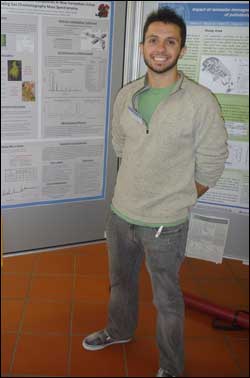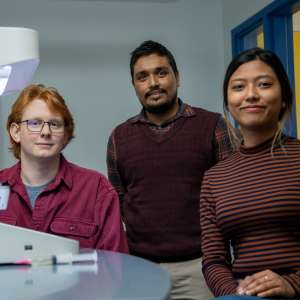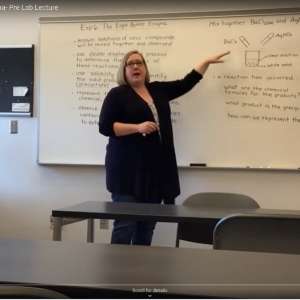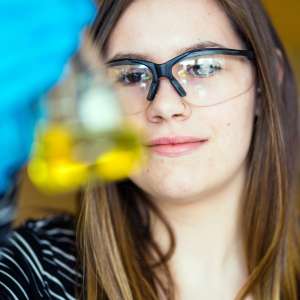Andrew Abeleira Presents at International Conference

Who would have guessed that lichens are an effective biomonitor of the level of pollution around us? Well, it’s true, and senior chemistry major Andrew Abeleira has spent the past two years as an undergraduate research assistant with Chemistry Professor Jim Kraly, studying that. Polycyclic aromatic hydrocarbons (PAHs) are chemicals that are produced whenever organic matter is heated. (That covers everything from roasting coffee to burning wood to combusting gasoline in an engine.) These pollutants accumulate in lichens, so lichens serve as important biomonitors of just how much of these PAHs are in our environment.
Last March, Andrew traveled with Dr. Kraly to present a poster on their findings at the Pittsburgh Conference on Analytical Chemistry and Applied Spectroscopy (PITTCON) in Atlanta, Ga., where they met the organizer of the 23rd International Symposium of Polycyclic Aromatic Compounds (ISPAC) at the University of Munster in Germany. The study of PAHs is big in Europe (where they’re called polycyclic aromatic compounds, or PACs), so the symposium organizer recommended that the team attend the Munster event, and they did.
“The conference was a success on all fronts,” Dr. Kraly reported. “We learned a lot about PAH chemistry and how our PAH research contributes to the field. Andy made several contacts for graduate programs, and we gathered useful information for our grant and proposal efforts.” Though the conference was fully focused on one class of pollutants, it featured research from a variety of areas, including chemistry labs, geology labs, biology labs, and archeological studies on the effects of these pollutants on world heritage sites such as the pyramids of Egypt. “Andy presented our first quantitative results measuring PAHs in lichen, which will be foundational to future research in my lab at KSC,” Dr. Kraly explained. “To the best of my knowledge, Andy was the only undergraduate research student who attended the meeting, and also the first KSC student to present a poster at an international scientific conference.”
“We learned that what we are doing here is state of the art,” said Dr. Kraly. “There were representatives there from Tufts and other Northeastern universities who were very excited that we were looking for these pollutants in lichens, because there isn’t as much research on this in the US as there is in Europe and South America.”
This research project has given Andy an opportunity to explore chemistry outside of the classroom. “I learned more doing this research than I did in the classroom,” Andy said. “You get a hands-on feel for what’s expected of you, without having a professor looking over your shoulder. You become much more self-reliant, competent, and confident. It’s really helped me along my path to pursuing a PhD.” Other KSC faculty are also studying PAHs, including Dr. Susan Whittemore, Dr. Loren Launen, and Dr. Jason Pellettieri in biology, and Dr. Richard Blatchly in chemistry. “We have a nice core of faculty and students here who have these compounds as some part of their research,” Dr. Kraly noted. “We’ve talked about the opportunity to have a consortium with some visiting scientists, including some of those that we met at the conference.”
The implications of the study of PAHs is far reaching, but “the broad goal is to track where the pollution is, and then determine how to deal with it,” said Dr. Kraly.





